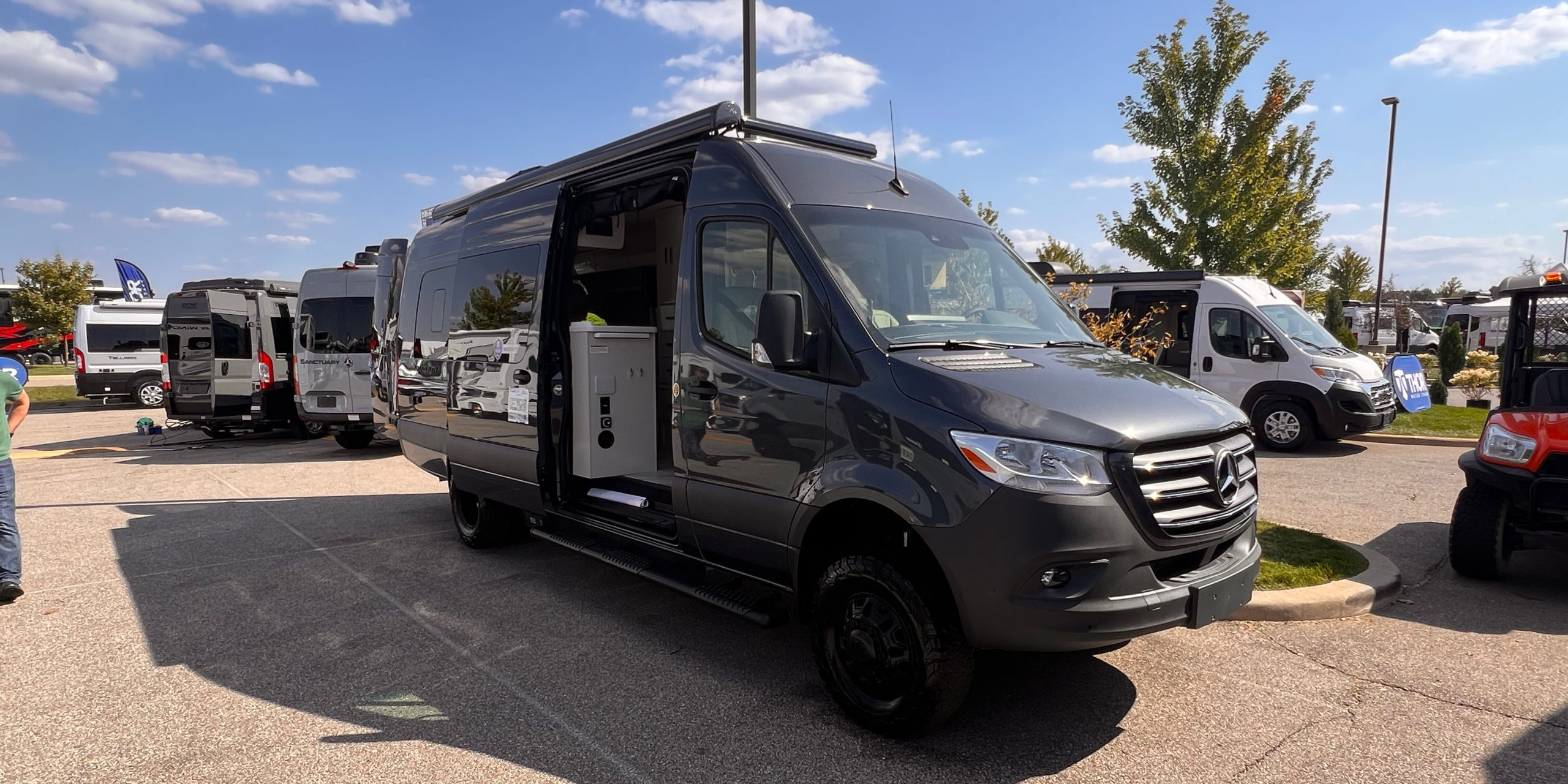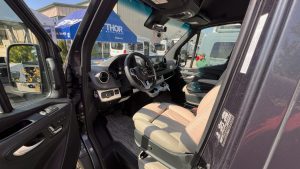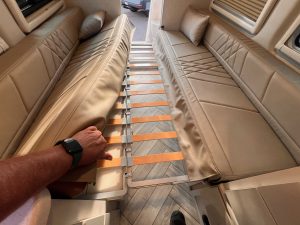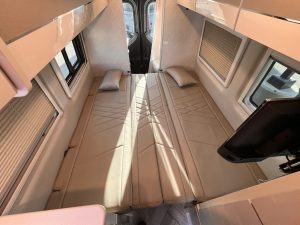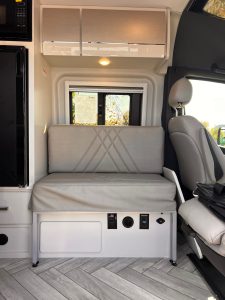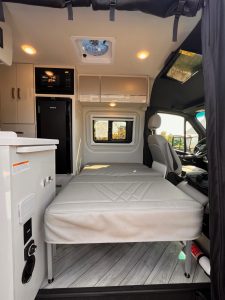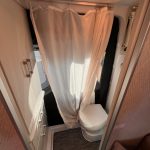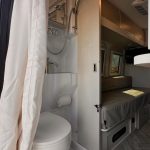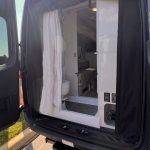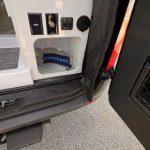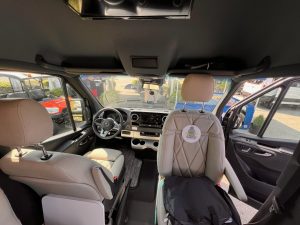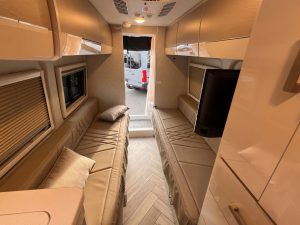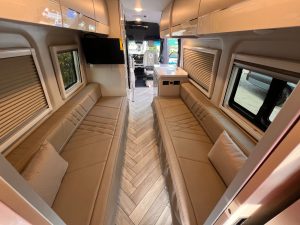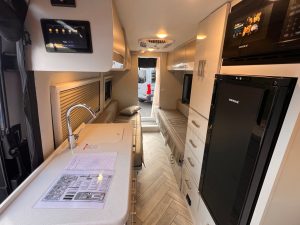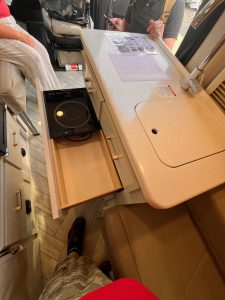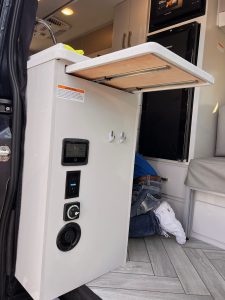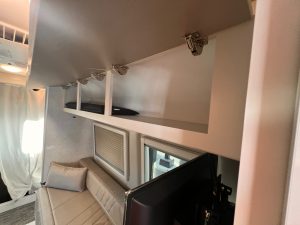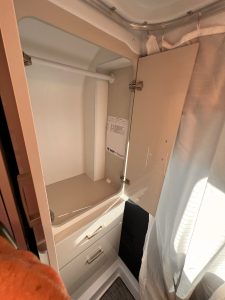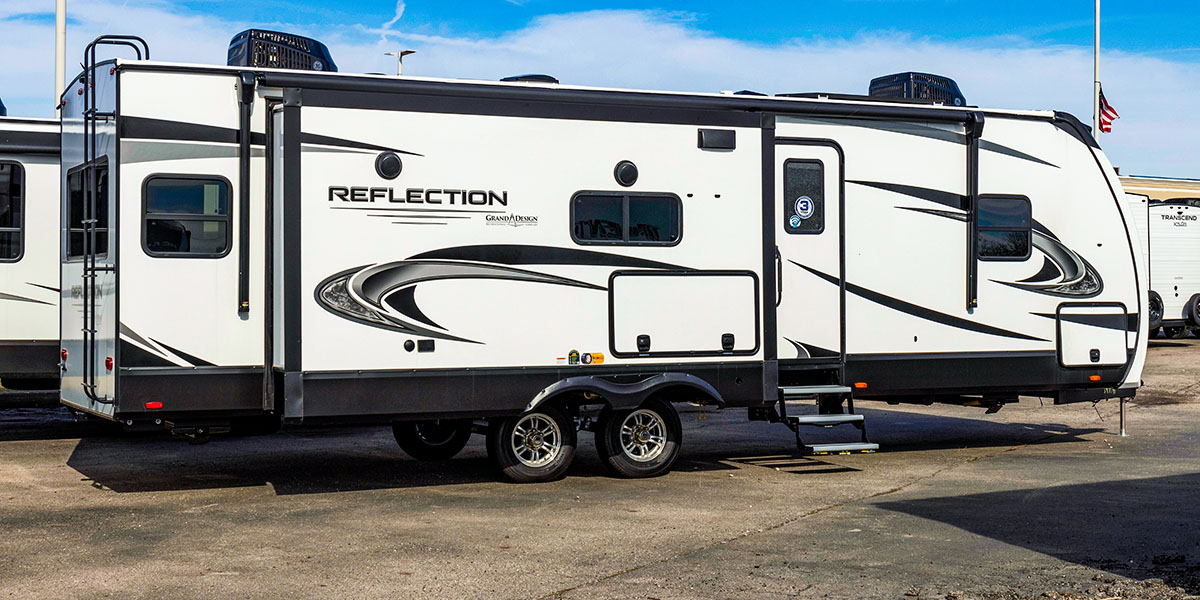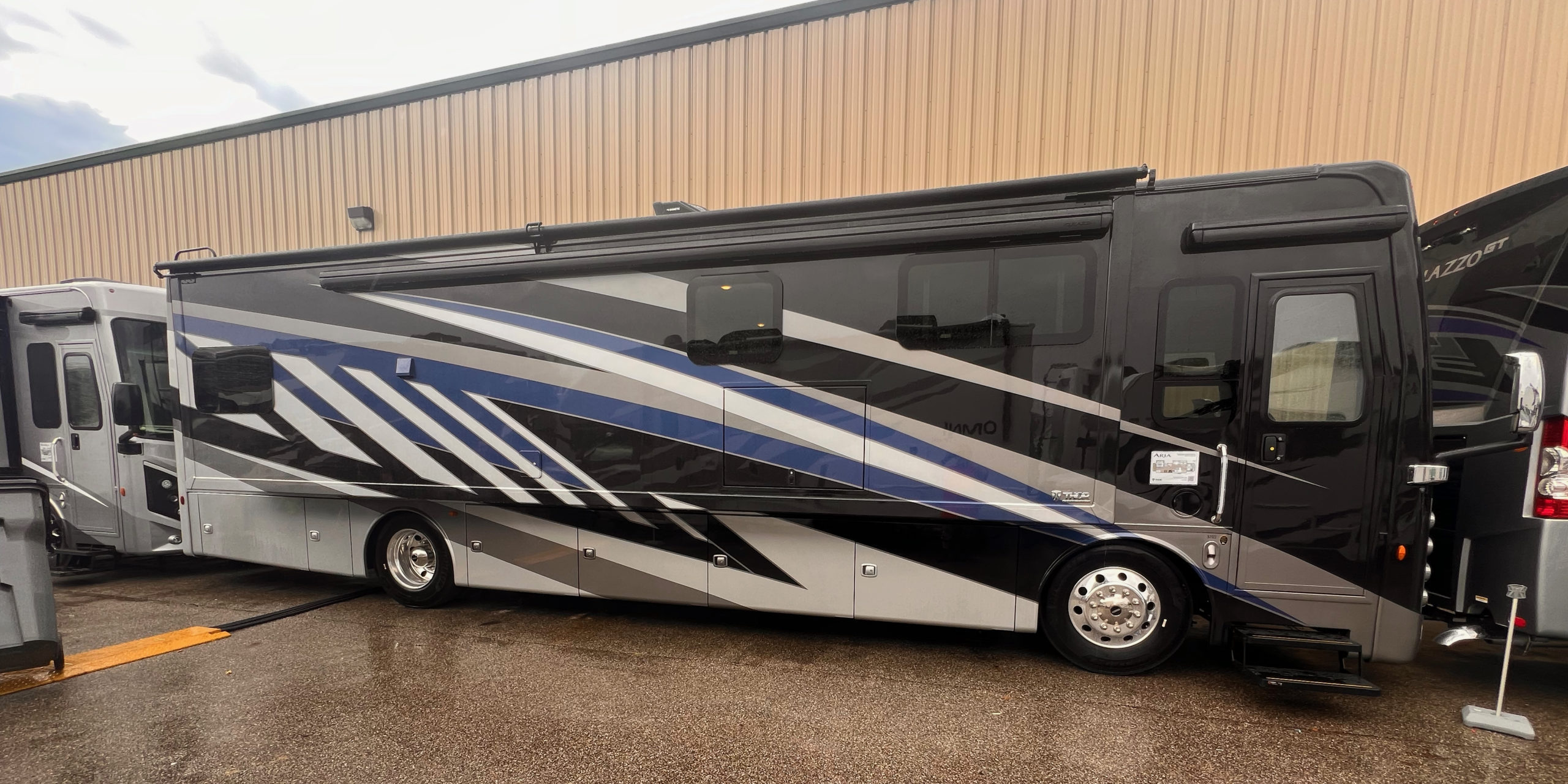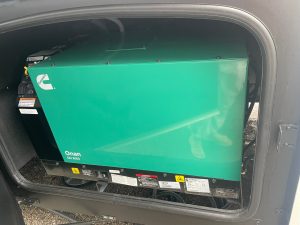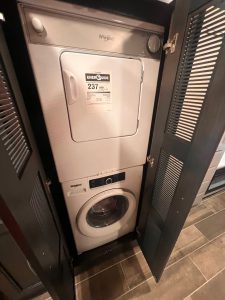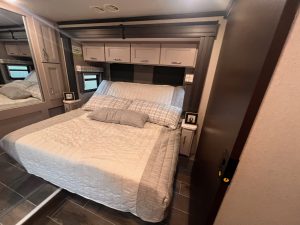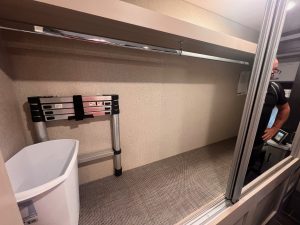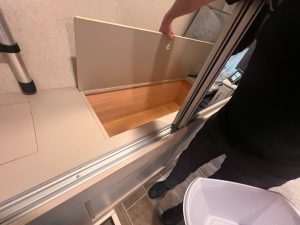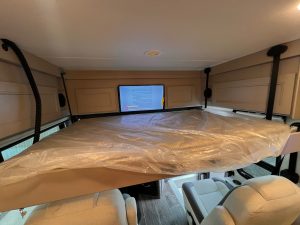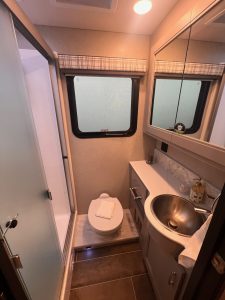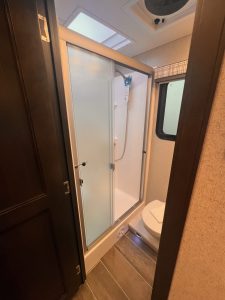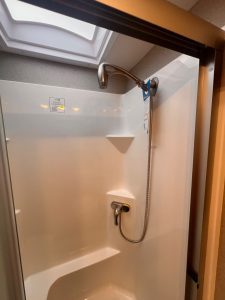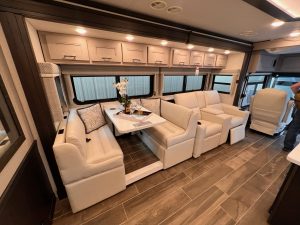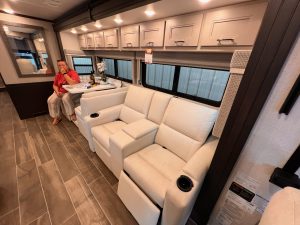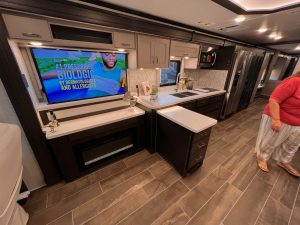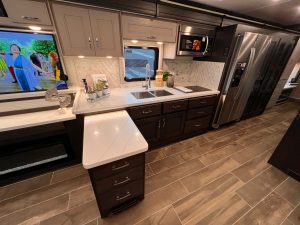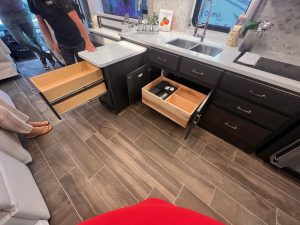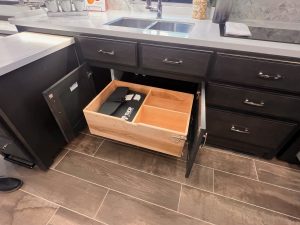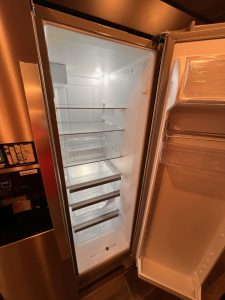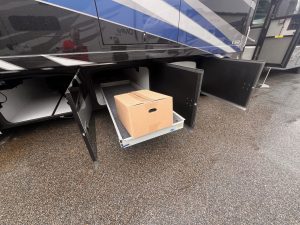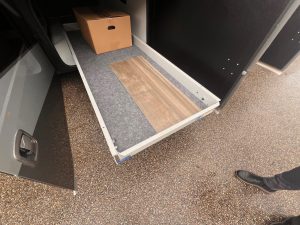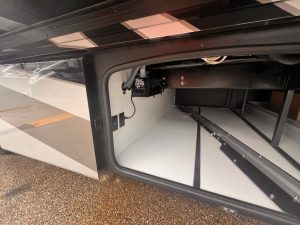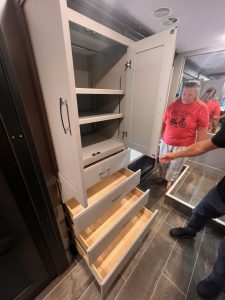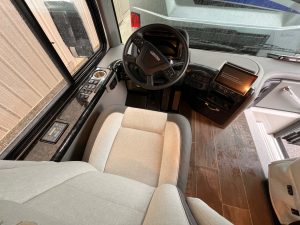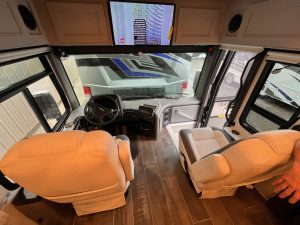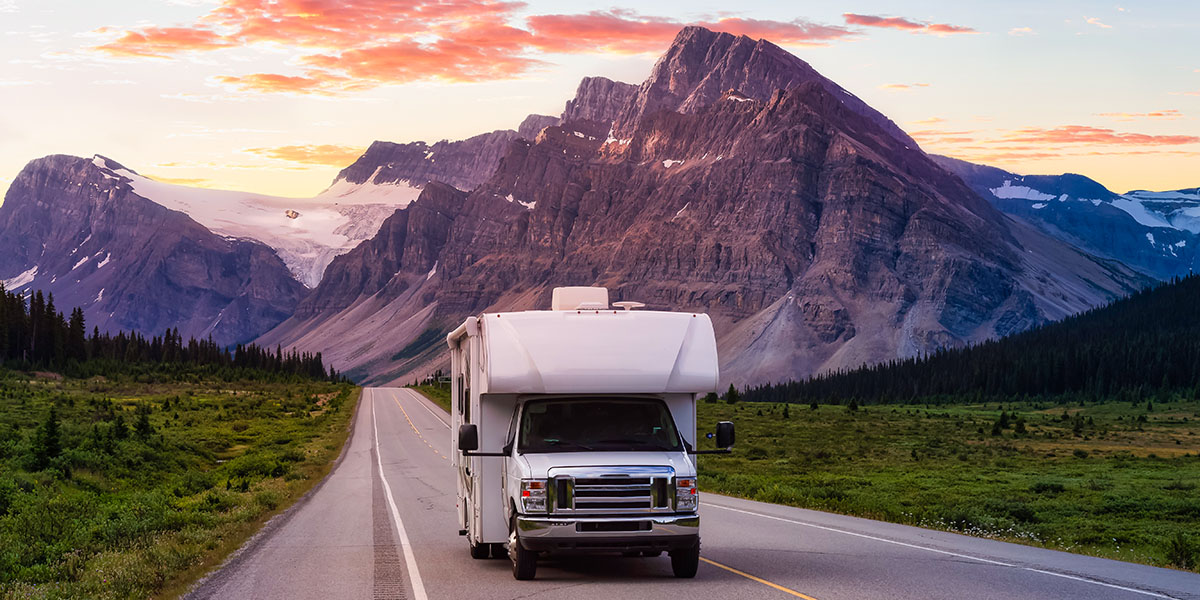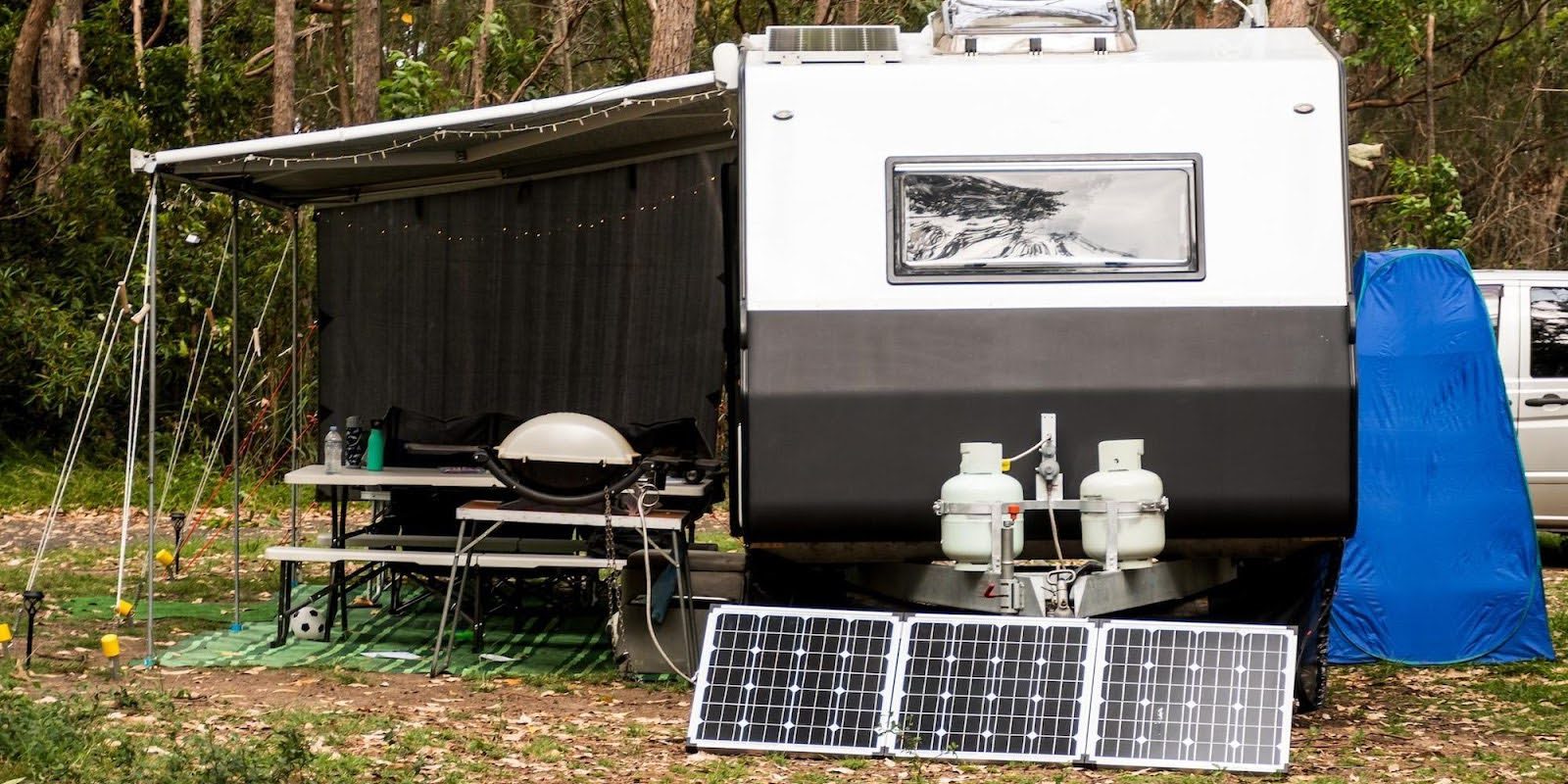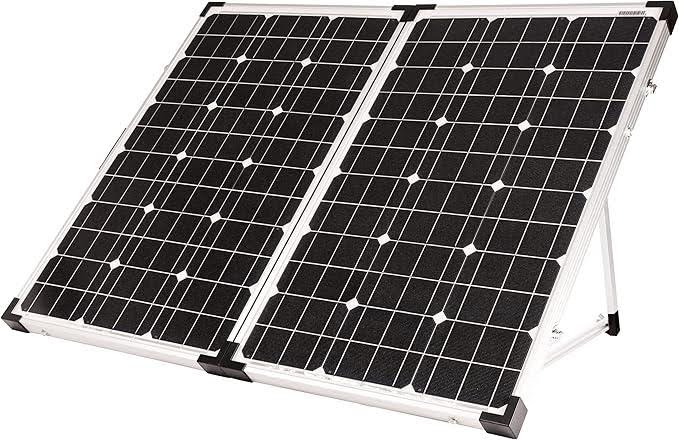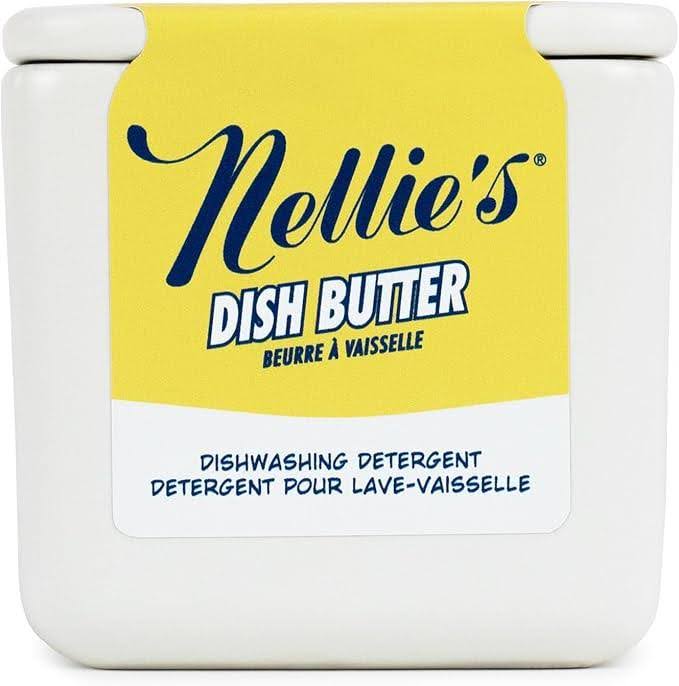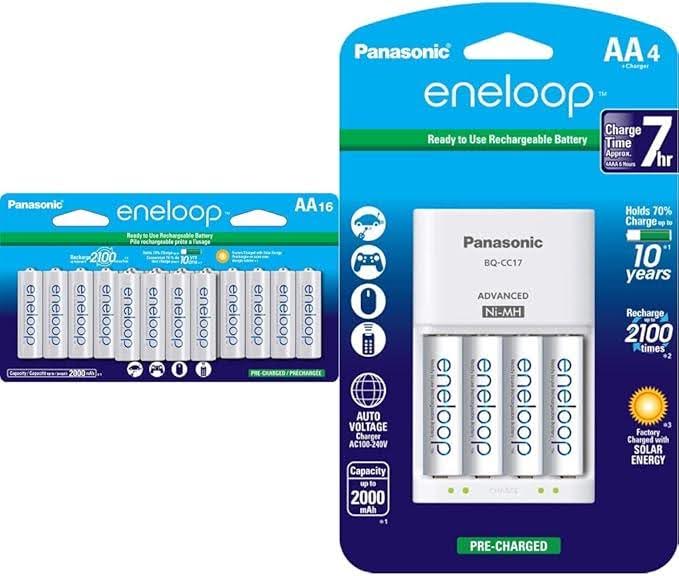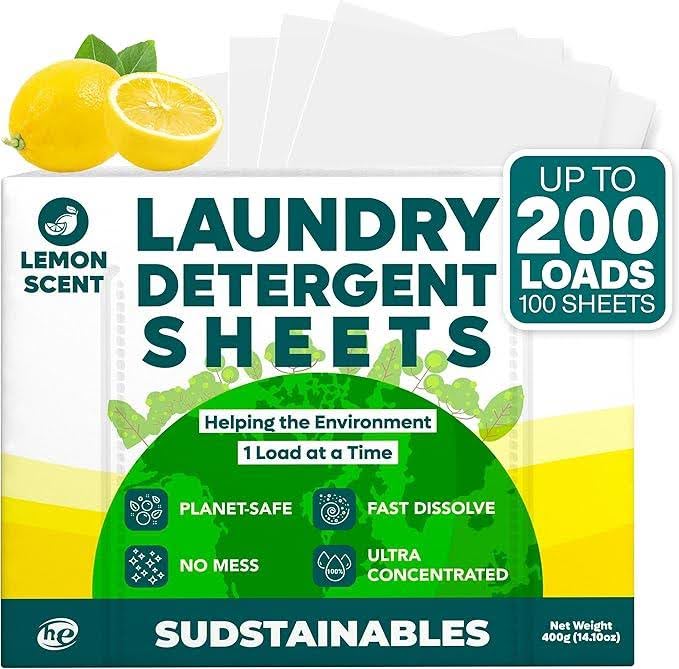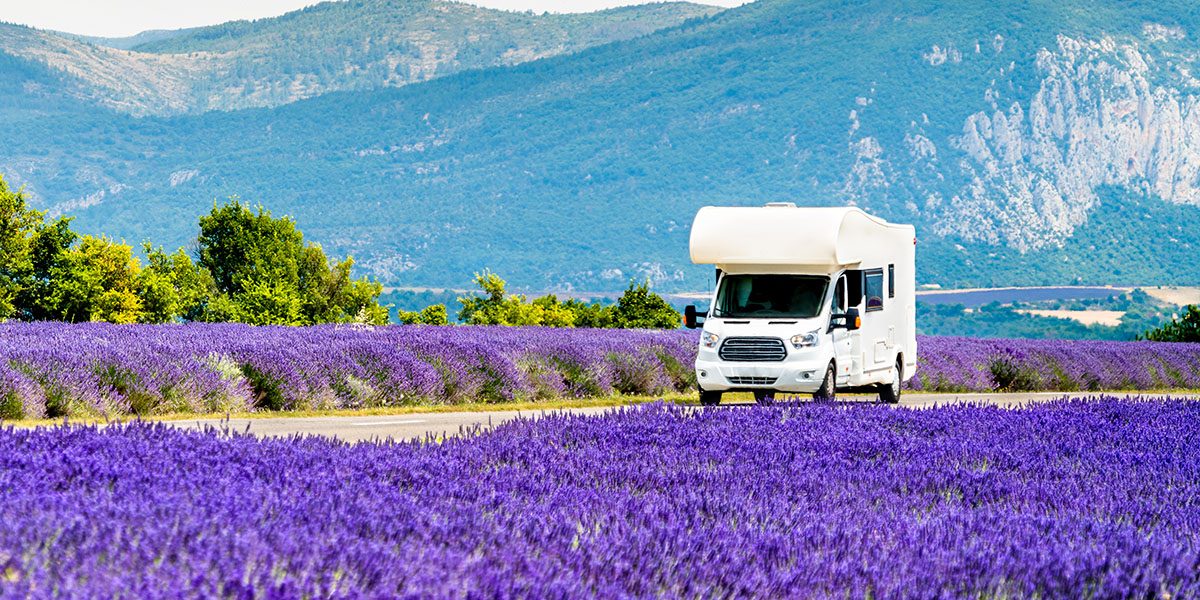If you’ve thought about a Class B but been hesitant due to of some classic Class B hang-ups — lack of interior storage or compromised bathrooms — the 2025 Thor Motor Coach Tranquility 24A just might be the solution you’re looking for. While it lacks exterior storage altogether, it’s a different story on the inside.
At a Glance: Tranquility 24A
I gave the Thor Motor Coach Tranquility 24A an above-average score of 7.2 out of 10 based on the flexible interior bedding, outstanding drivability of the Mercedes-Benz Sprinter chassis, surprisingly ample interior storage, and decent bathroom in a Class B.
With an MSRP in excess of $200,000, I’d say features like the all-wheel drive (AWD) and the aggressive exterior are pretty commensurate for what you would expect for a Class B at that price point.
[review_summary class=”custom-class” title=”2025 Thor Motor Coach Tranquility 24A” description=”This score is awarded by an expert reviewer conducting an independent assessment of the RV.” overall_score=”7.2/10.0″]
Check the Specs
- Sleeping capacity: 3
- UVW: 8,500 pounds
- CCC: 2,461 pounds
- Exterior length: 24 feet 4 inches
- Exterior height 10 feet 6 inches
- Exterior width: 7 feet 8 inches
- Fresh/Gray/Black: 35/27.5/26.5 gallons
- Awning: 14 feet
- MSRP: $216,860
Features We Love
- Mastervolt power system with second alternator
- Mercedes-Benz Sprinter platform
- Rear bathroom
- No propane
- Bedding — two twins or a single larger bed
Benefits
- Exceptional battery system. This RV is equipped with a 460 amp-hour Mastervolt battery system as well as Mastervolt CombiMaster inverter/charger system. There’s also a second alternator that is able to charge the battery as well as a modicum of solar on the roof. These systems have proven to be exceptional and come out of the marine industry where the tolerance for failure is nonexistent. The second alternator also means no separate generator to maintain nor listen to.
- Sprinter chassis. The Mercedes-Benz Sprinter platform incorporates a lot of comfort and safety features that are on-par with what you expect in a high-end car. These features can help make driving much more pleasant as well as safer. Additionally, the four-cylinder diesel engine is remarkably efficient yet surprisingly peppy. These are nice to drive.
- Bathroom access. See our bathroom section later but the rear bath in this is far more usable than what you may find in other Class Bs.
- Great heating. The heat and water heat in this RV utilizes the diesel fuel aboard simplifying the number of places you have to go to fuel up this RV. The Aqua-Hot system also provides really pleasant heat — another bonus.
- Multifunctional sleep space. See our section on the bedding in here but the two bench seats in the back can be great seating as well as sleeping for two and, by using a platform that slides across the open space and employs the backrest cushions, you can even achieve one very large sleeping surface if you choose.
Challenges
- Exterior storage. There is none. So, all of your storage options are strictly found in the interior.
- Maintenance accessibility and price. The one downside to the Mercedes-Benz Sprinter chassis that maintenance can be more difficult to obtain in rural areas, and the price of even routine maintenance is high.
- TV placement. Outside of watching TV in the bedroom, the placement is not great for viewing. In the living area, it swings down from the ceiling and faces the back, which creates awkward angles.
Best For
- This could be a great RV for those who camp with friends and want a place to sit inside and catch up. With the two bench seats in the back there is a good amount of seating space in here.
- With the all-wheel-drive and outstanding battery system, this could also be a good choice for those who like to camp off the grid.
Key Areas We Evaluate for RV Buyers
Sleeping Space
Sleeping in the Tranquility 24A is less compromised than many and offers some good flexibility. Without touching anything, you have two twin-sized beds on either side of the rear of this van. For those who like to sleep in their own bed (or if you’re camping with a friend), this works out well. It gives each person a place to rest after a long day.
There is also a platform beneath these beds that slides across the space between them. You can then utilize the backrest cushions to convert the entire space into a single large bed measuring 75 inches by 70 inches. (But know that adding the center surface also blocks the pathway to the bathroom.)
Additionally, sleep space in the Tranquility 24A includes a two-place bench seat behind the front captain’s chairs which also folds out into be a bed measuring 40 inches by 61 inches. I would imagine that it would be best suited for a younger traveler. Also, when the second bed is folded out, you completely block the sliding door. So, there are a few reasons to think of this as a last resort sleep space.
Bathroom
One of the biggest disadvantages of many Class Bs is the bathroom. However, I would say that the Tranquility 24A goes a long way to countering that with a bathroom that covers about two-thirds of the back of the rig. This includes a wet bath, which means that the shower and toilet are in the same space and there’s a curtain that draws around the bathroom to keep water contained. But as for usability, this bathroom works well with enough space to do what you go here to do.
Being at the back of the Tranquility 24A, you could arguably draw a curtain across the two opened back doors and make that a large shower — depending on where you’re camping. It’s not tremendously uncommon to see this use case in #vanlifers. And with this being a rig that’s suitable to go into some off-road situations, that might be the best choice.
Water is heated by a diesel-fired Aqua-Hot system. So, you do have a good supply. (But, of course, showering outside isn’t appropriate everywhere.) You can also shower in the bathroom which is really the intention here. There is also a thick curtain that covers the back of the van, so any privacy issues are solved with that.
Living Area
The two beds at the back of the Tranquility 24A form a rather spacious place to sit during the day. You could easily seat three people on each bunk, which makes it suitable for up to six people — and converts into a pretty social space. There is also a Lagun table that can be slotted in here which is a table that can move around like a planchette.
There is one TV back here on the wall. And, if you lounge in the twin bed, this is at a good position. (But you’ll be calling a chiropractor if you try to sit on the road side and watch that TV.) That’s true of the front TV as well, which swings down from the ceiling and faces the back of this camper. Honestly, I’d rather just have storage over the cab rather than a TV that’s not all that convenient. I’d also like these TVs to be 12-volt models, so you don’t have to run the inverter to operate them.
Kitchen
Another challenge in many Class B is the kitchen. They rarely have much counter space. Again, here the Tranquility 24A stands out from its Class B peers. There is more than typical counter space in this RV, and the kitchen employs a portable induction cook top as the primary heater of pots and pans.
This is nifty because you can stow it when it’s not being used. But you can also use it where it’s convenient — on the kitchen counter, on the handy counter extension, on a table outside. I really like this solution for a lot of reasons.
While the counter space is good, relatively speaking, the refrigerator is on the small side. (Not uncommon in Class Bs.)
Four-Season Capabilities
The holding tanks on this vehicle do have 12-volt heating pads. Even so, I would be cognizant of the temperature if you’re camping where it can get below freezing for any length of time. The Tranquility 24A is not intended to park in deep cold.
Storage Space
Like virtually all Class Bs, there is absolutely no exterior storage on this unit. The storage you do get are overhead cabinets above the two twin beds and above the second-row bench seat. That actually isn’t bad. There is also a cabinet that takes up about a third of the back of this rig that provides hanging storage, not something you often find in a Class B RV, and a few drawers. There is also a storage cabinet opposite the kitchen with four drawers and more hanging storage plus another drawer under the fridge.
All told, are certainly more drawers and cabinets inside this rig than you’d find in a lot of Class B, so interior storage is a plus.
Closing Notes on the Tranquility 24A
With the all-wheel-drive platform and some aggressive details outside the story, the Tranquility 24A clearly wants to find an off-grid adventure. The Mastervolt power system backs that up. So. this would be a decent machine to take on some adventures. But be advised: It’s not a hard-core off-road vehicle.
I would think that the flexible interior and sleeping situation could make this a good choice for those who camp with life partners or just friends. This is also an unusual van in that you can spend time inside if the weather gets lousy just having a conversation with friends.
A Note on the RV Trader Review Process
RV Trader asked RV shoppers what was most important to them in their RV buying process. Potential buyers — like you — helped us to identify a list of six key areas that camping and travel enthusiasts always look at when they’re searching for the perfect RV: sleeping space, bathroom, living area, four-season capabilities, and storage space.
The RV Trader team then got to work providing you with honest and unbiased evaluations. If you’re wondering, that’s where I came in. As an RV expert and enthusiast, I provide an honest look at RVs from an RV industry insider perspective.
Make Your Move
Start shopping for the year, make, and model. Find Your Tranquility 24A
What Other Campers Are Saying
Read the best reviews by owners. Search for an RV Model
